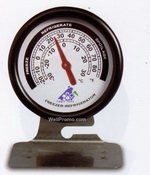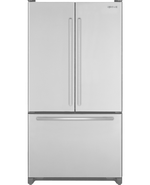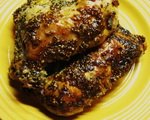|
Cold Food Safety – Keeping Foods Cold When They Should Be
Cold food safety is just as important as hot food safety, since bacteria can begin to grow at room temperature in cold foods that are left outside of the refrigerator to thaw at room temperature; therefore:
• Cold foods should not sit outside of the refrigerator for more than two hours which includes preparation time. Keeping cold foods cold involves keeping them at a temperature of 40 degrees Fahrenheit or lower.
• During shopping the most perishable foods such as meat, poultry, fish, seafood, eggs and milk should be placed in the shopping cart last to keep them colder longer by not walking around the store as you shop with items such as these coming to room temperature when they should be cold.
• After grocery shopping food should be taken home immediately and refrigerated as opposed to running other errands with food that is rapidly warming in your vehicle.
• Foods that state “keep refrigerated” should only be put in the shopping cart if they are still cold to the touch and frozen foods should be frozen solid without ice crystals or frost on the package, since this could indicate that food has been refrozen after thawing.
• During power outages the refrigerator door should be kept closed, since refrigerated food is only safe for 4-6 hours, foods in a packed freezer are safe up to two days, but a half full freezer is only safe for about 24 hours.
• Foods should never be thawed at room temperature, and if thawed in a microwave should be cooked immediately after thawing.
For other tips on cold food safety go to wholefoodsmarket.com
For some great sections on cold food safety some great references are:
• The Taste of Home Cookbook – All New Edition from Taste of Home Books, Reiman Media Group
• The All New Good Housekeeping Cook Book, Edited by Susan Westmoreland, Hearst Books, New York
• Betty Crocker Cookbook – New Edition, by Wiley Publishing, Inc.
Cooking Basics |
Keeping Cold Foods Cold Involves:
Keeping Them At 40 Degrees Fahrenheit Or Lower

Cold Foods Should Either Be Thawed In The Regrigerator

Or Thawed In The Microwave And Cooked Immediately

Cooked Food Shouldn't Be Allowed To Cool For More Than 2 Hours Before Being Refrigerated






